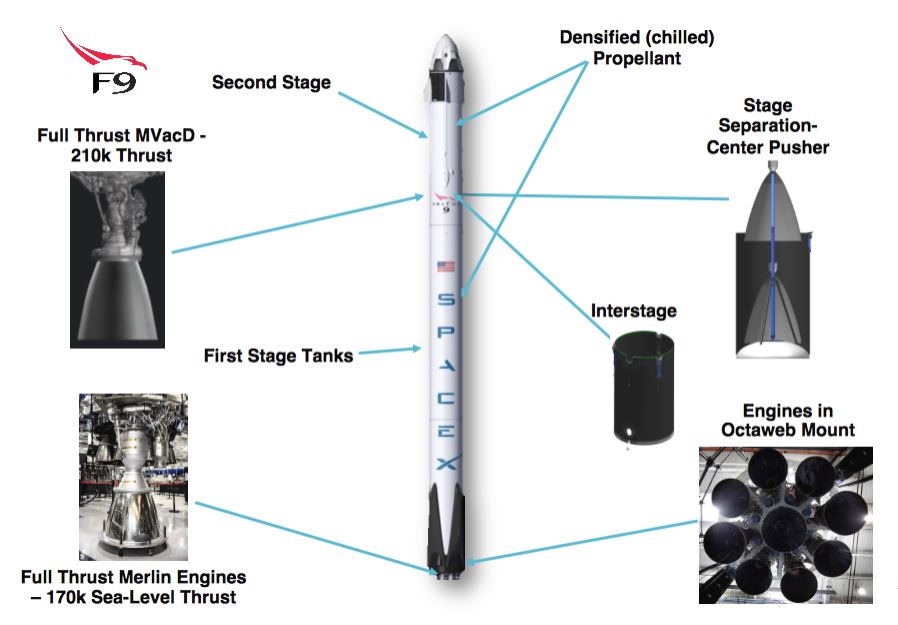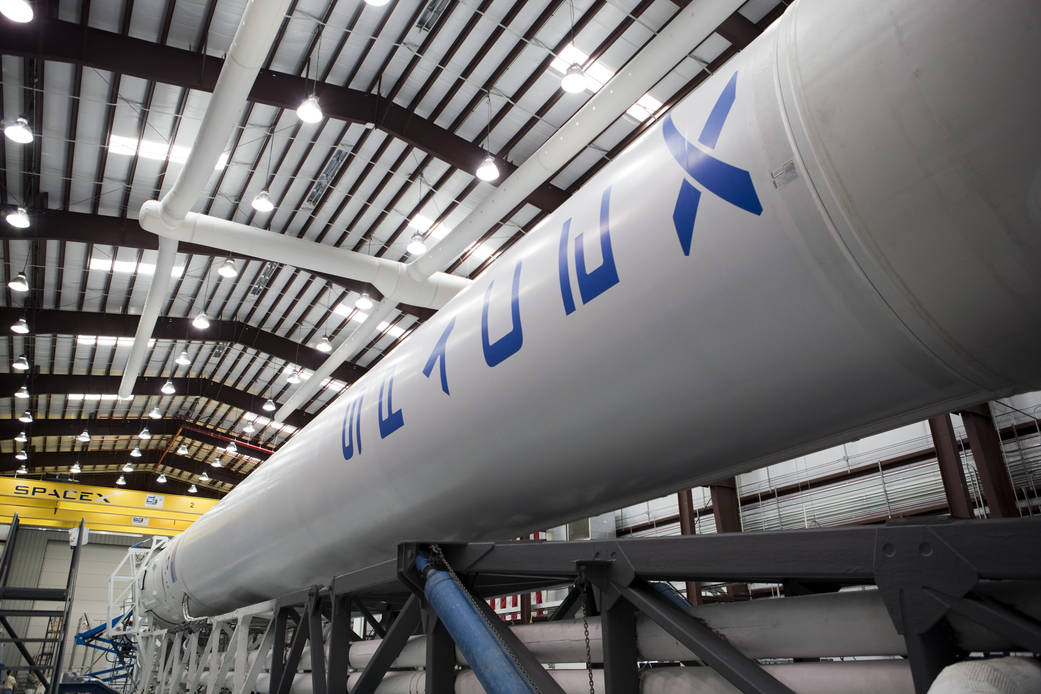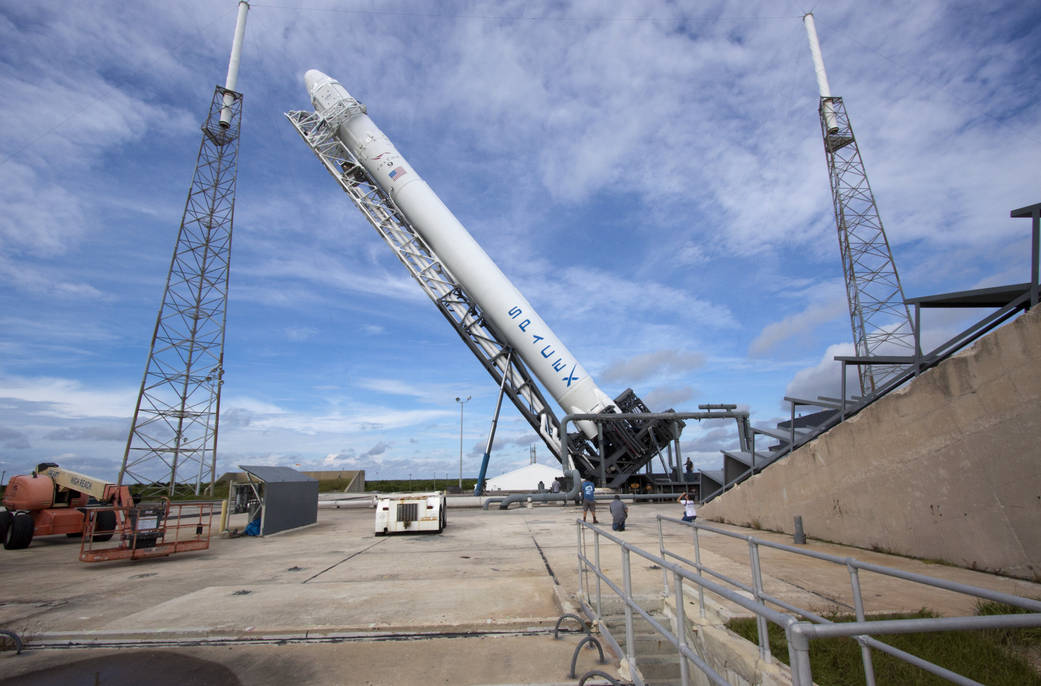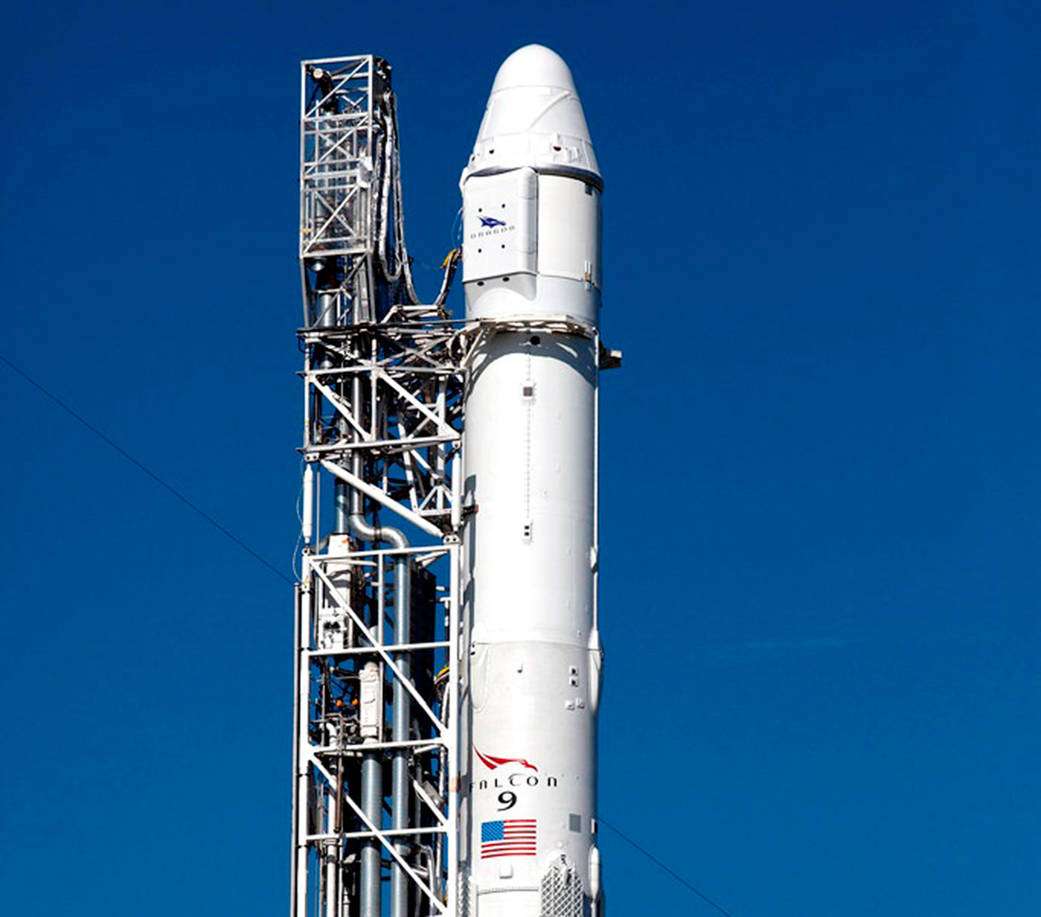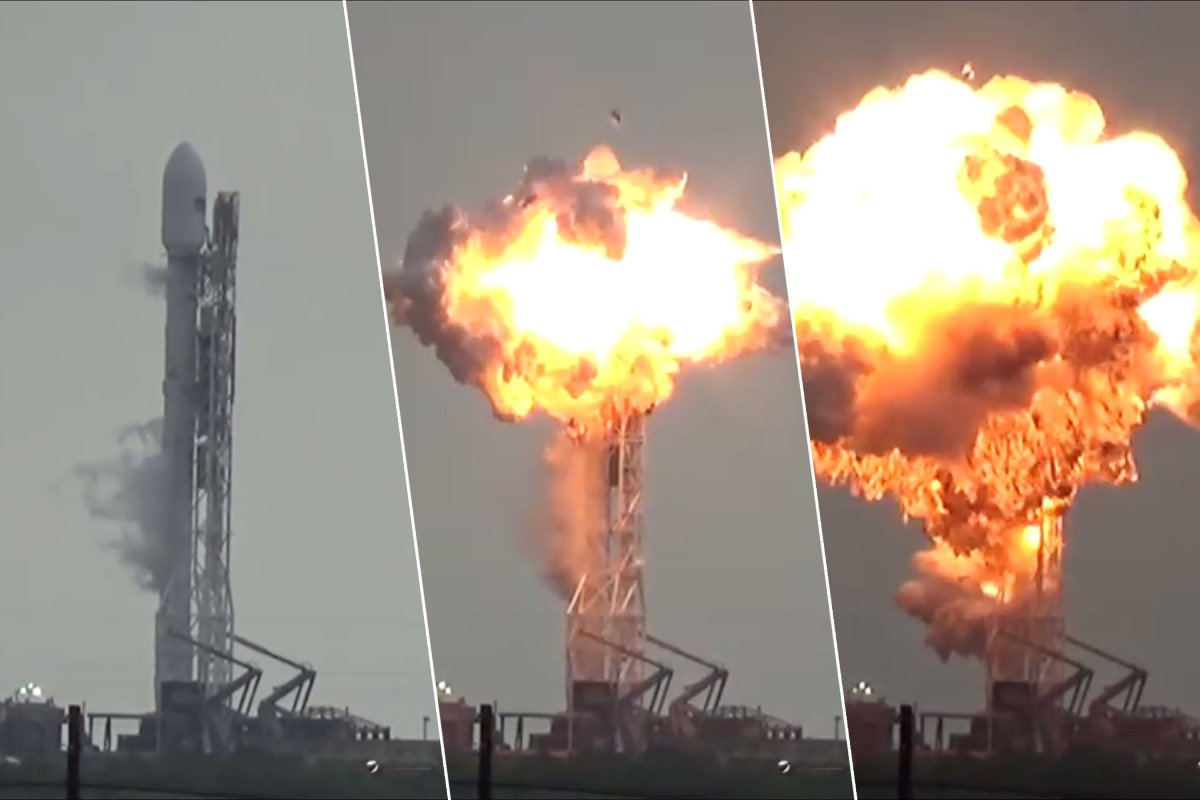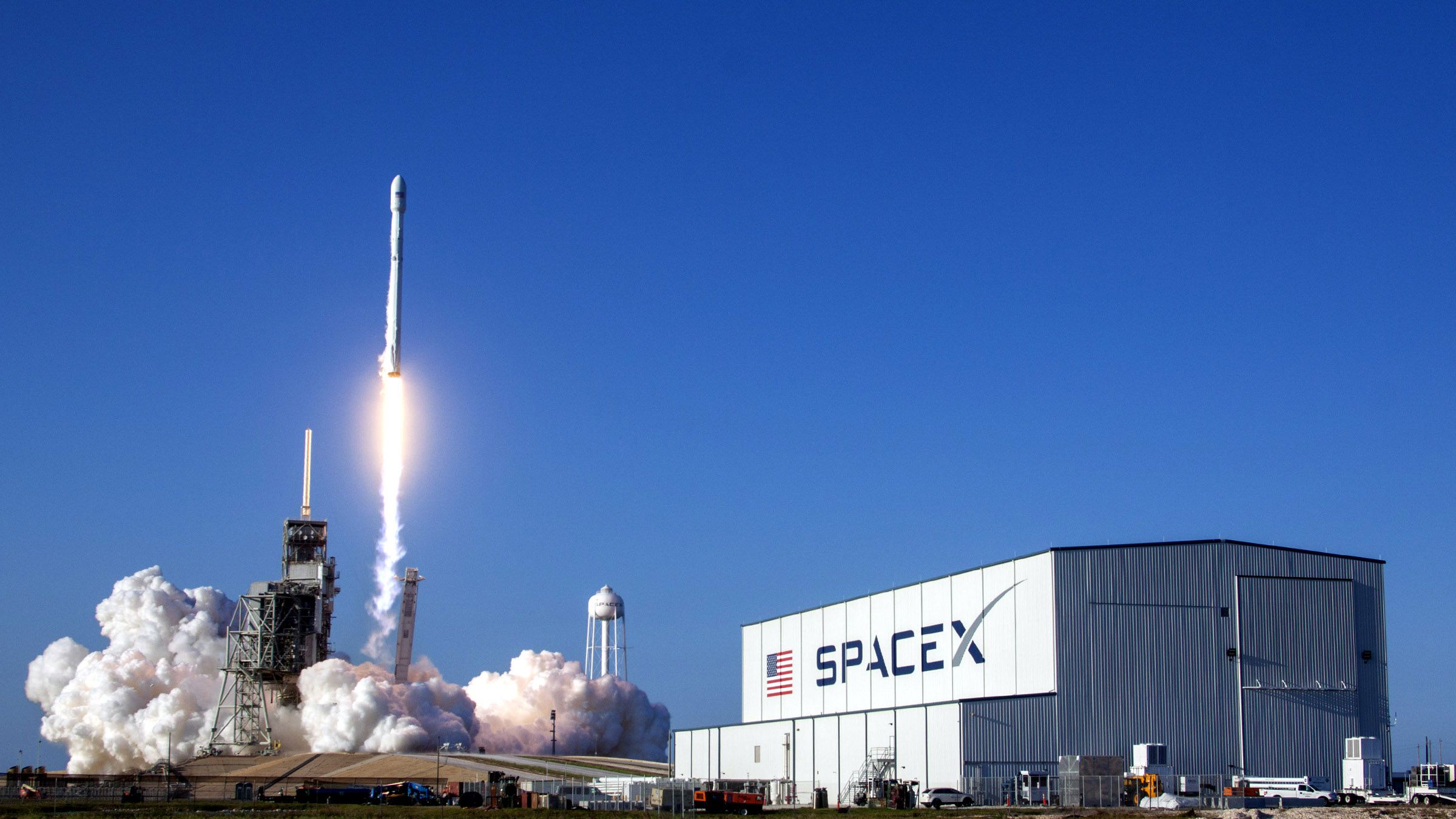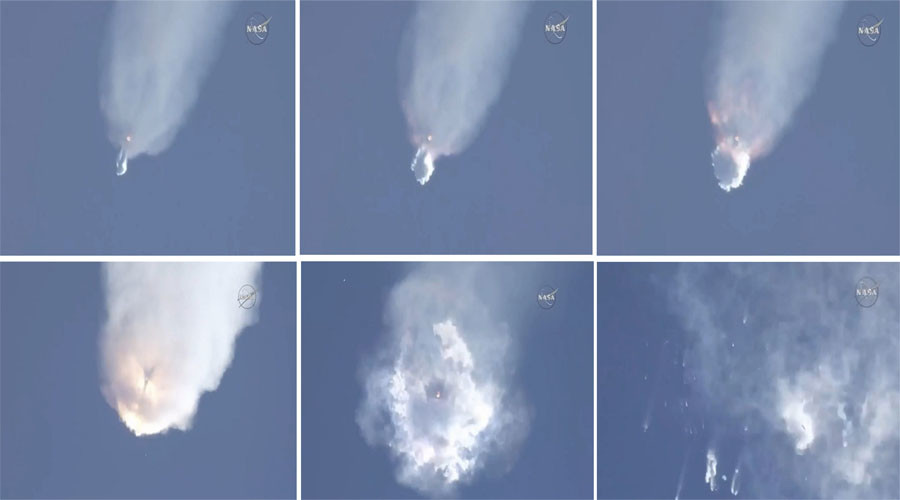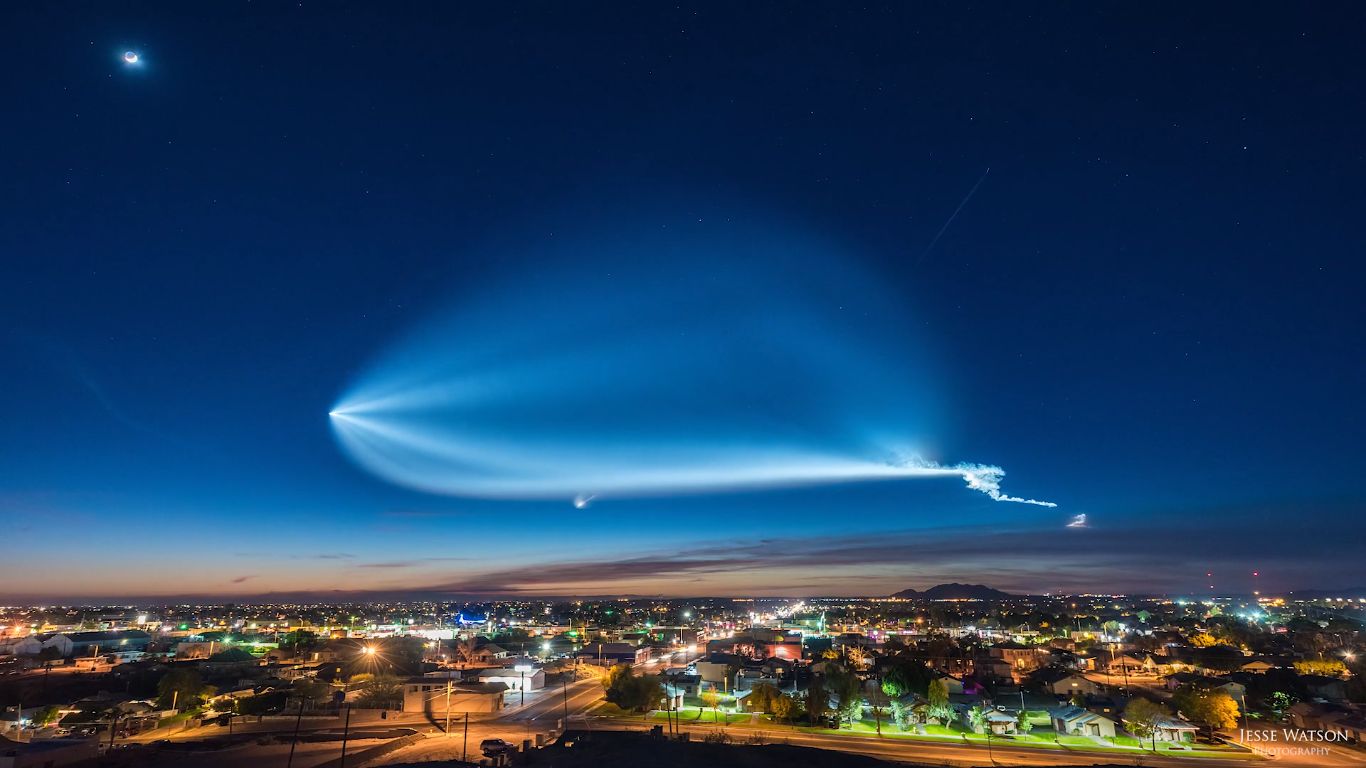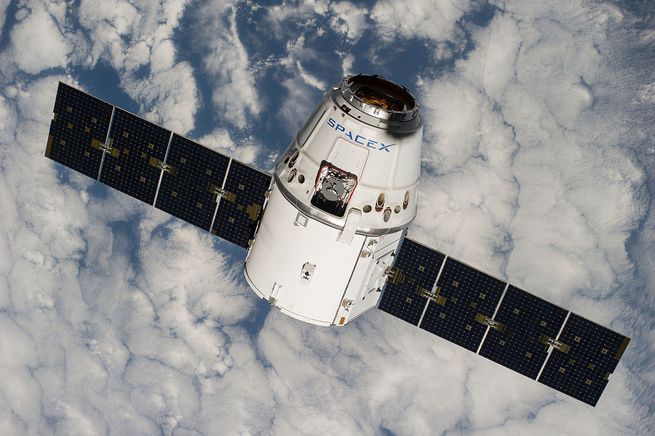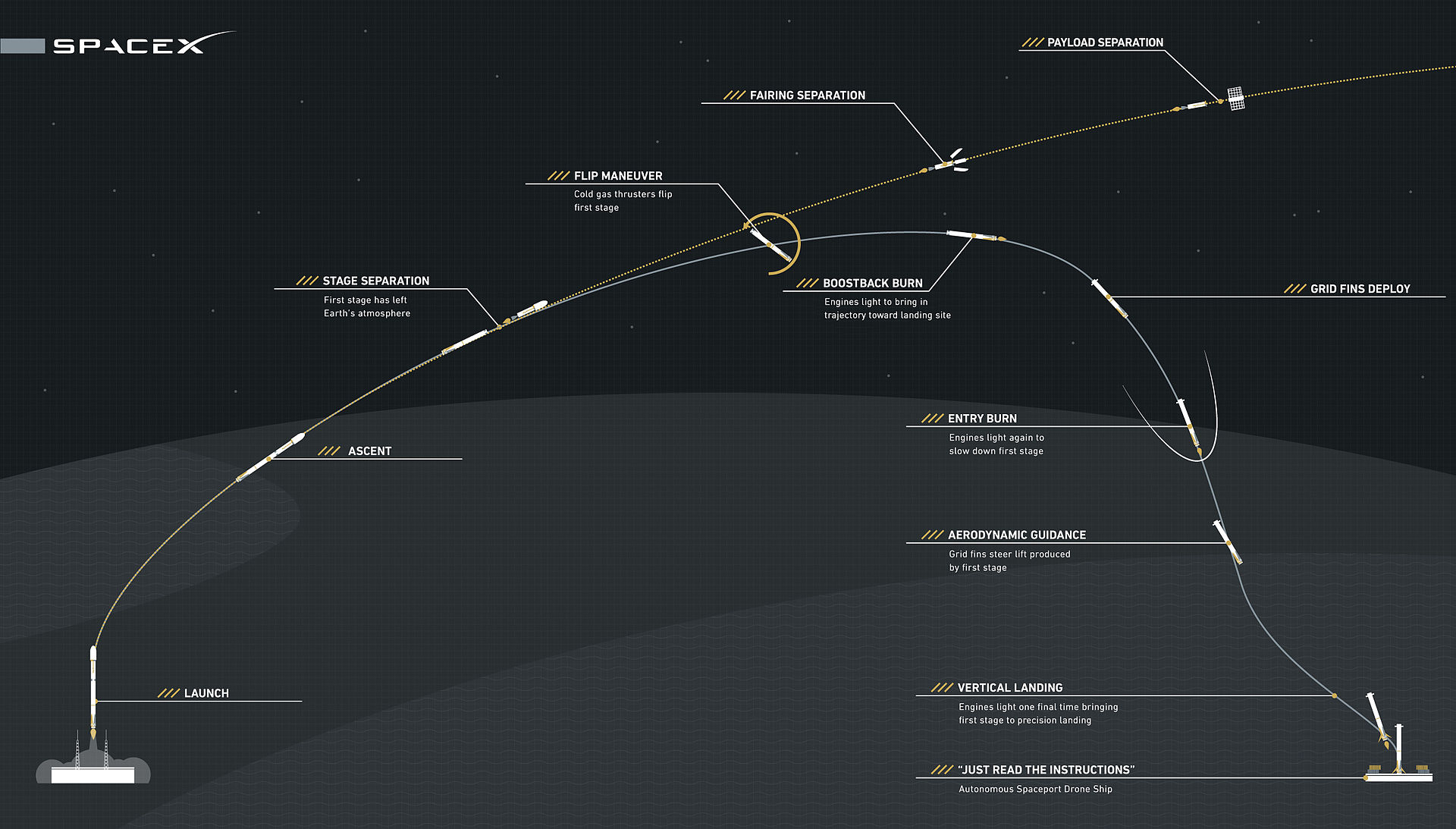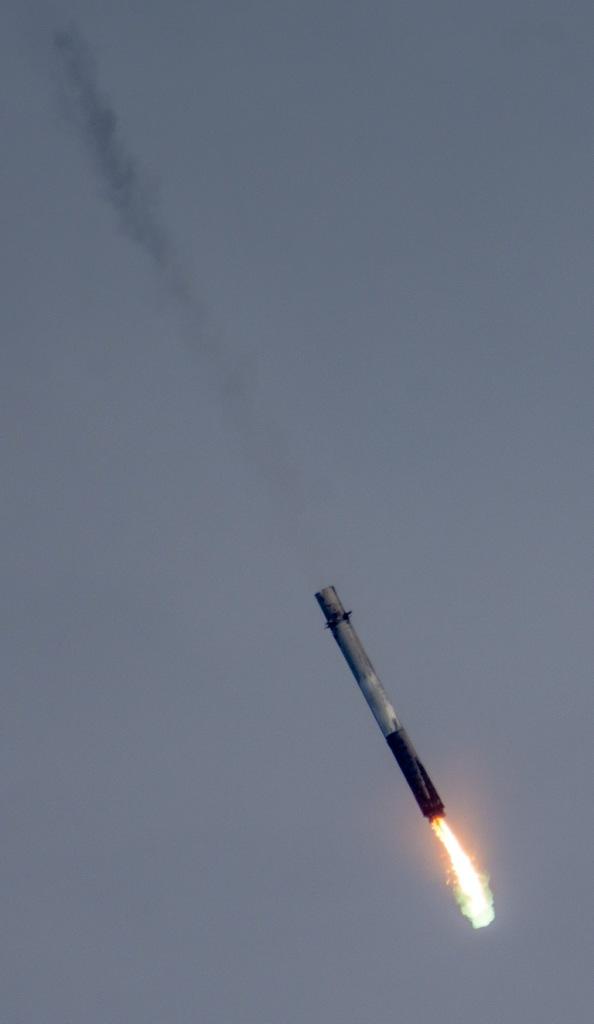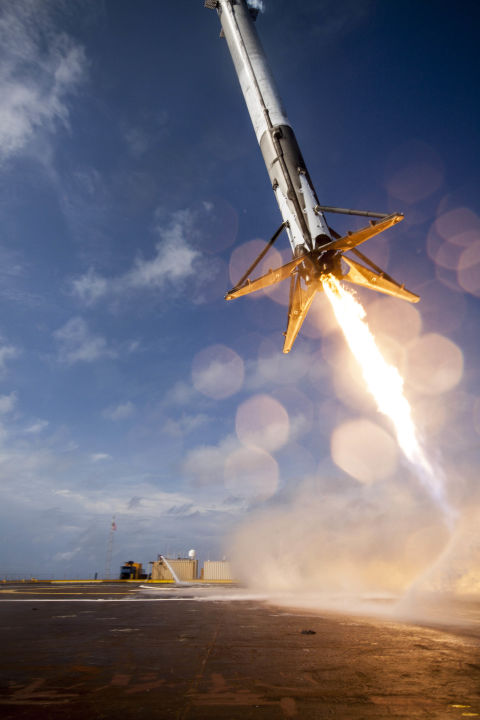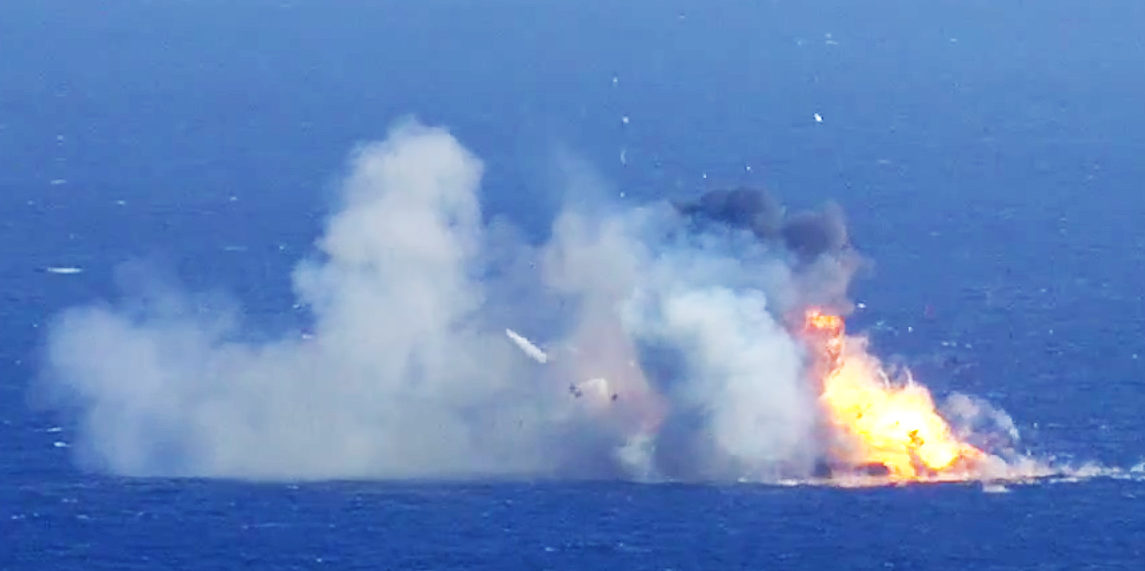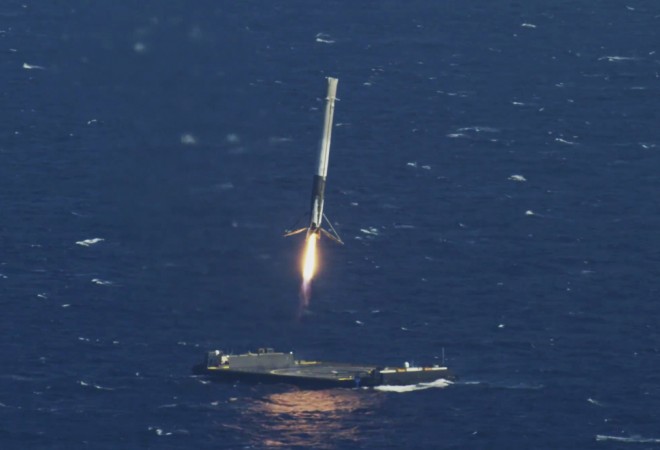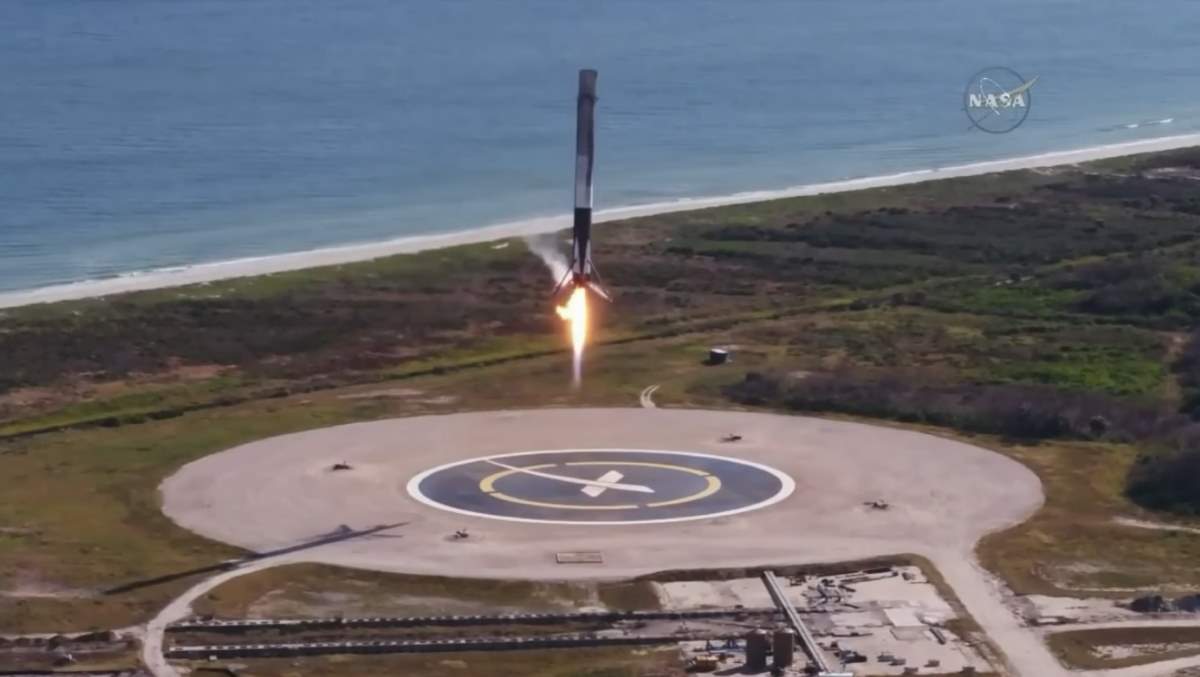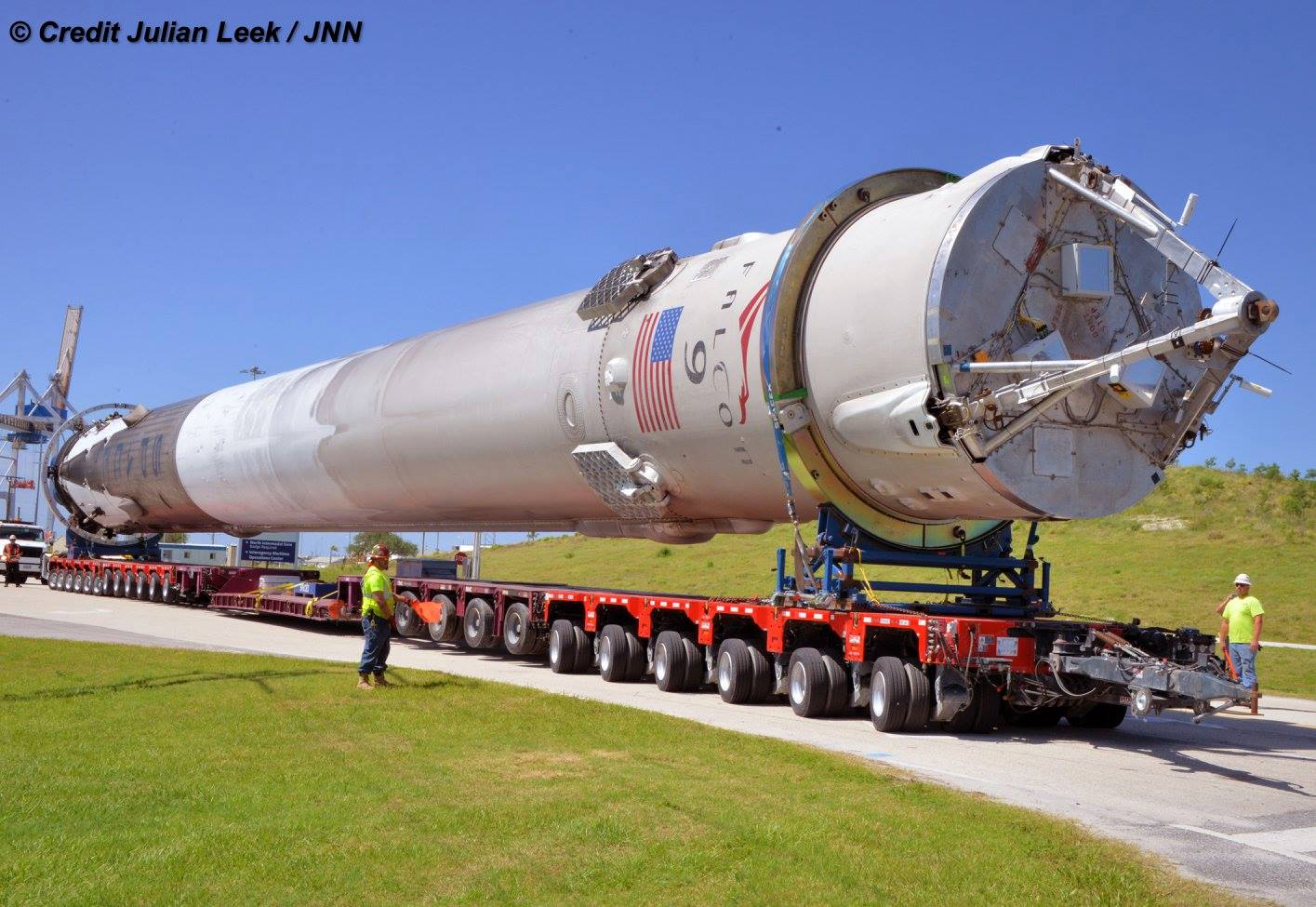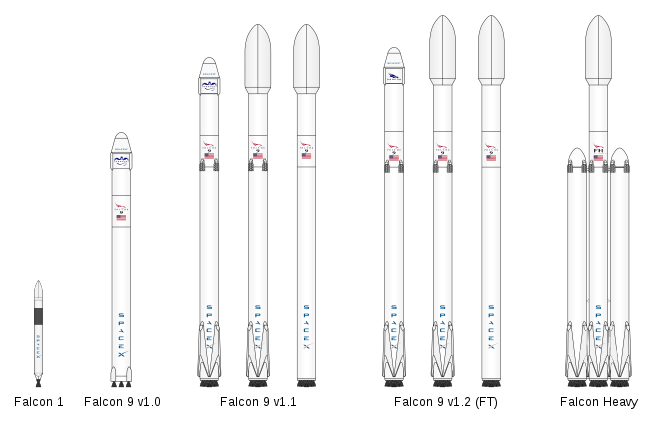Falcon 9 | SpaceX’s Remarkable Reusable Rocket!
Making Space Accessible!
The Falcon 9 is a very special rocket developed by SpaceX with the help of NASA as they wanted to encourage private companies to develop the capability to deliver cargo and astronauts to the International Space Station! Amazingly, the first stage of the Falcon 9 can land by itself and be reused – the first rocket capable of doing this!
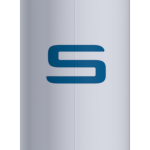
Falcon 9 Rocket Summary Facts
- Height: 70 m (230 ft)
- Width: 3.7 m (12 ft)
- Weight at lift-off: 549,000 kg (1,210,300 lbs)
- Number of Stages: 2
- Number of 1st Stage Engines: 9 Merlin rocket engines
- Payload to Earth Orbit: 22,800 kg (50,300 lbs)
- First Launched: June 4th 2010
The Private Rocket Built To Make Spaceflight Affordable!
SpaceX was started with the goal of making spaceflight cheaper and to encourage the human exploration of the solar system, especially the Planet Mars. To achieve this SpaceX needed to develop a safe, reliable and reusable rocket. With help from NASA (who wanted to stimulate the commercial space industry), the two-stage Falcon 9 rocket was developed.
The Falcon 9 was designed to be reusable and reliable, like a commercial jet plane, which would only need refuelling after each flight. This had never been attempted before so the Falcon 9 had to achieve many spaceflight firsts, such as;
- The Falcon 9’s first stage successfully landing in 2015 (view the video here).
- Reusing the Falcon’s Dragon cargo capsule to deliver cargo to the International Space Station (ISS).
- Launching a previously used rocket in 2017 for the first time.
- Recovering the expensive payload fairing from space.
- The Falcon 9 delivered astronauts to space in the reusable commercial Crew Dragon spacecraft.
The Falcon 9 has been launched over 60 times to space, putting military and commercial satellites into orbit and delivering and returning cargo from the ISS for NASA. Shortly the Falcon 9 and the Crew Dragon spacecraft will transport astronauts to the ISS and I’m sure we’ll see lucky space tourist flying atop a Falcon 9 in the near future!
SpaceX will continue to use the Falcon 9, and the technology developed for it, to work towards their goal of reducing the cost of spaceflight and ultimately to facilitate the colonization of Mars with their new and exciting BFR launch system!
More Interesting Facts About Falcon’s Design!
- Falcon 9’s reusable first stage uses 9 SpaceX designed Merlin rocket engines. These are arranged in a circular ‘Octaweb’ cluster pattern.
- The Merlin engines burn super-cooled liquid oxygen and rocket grade kerosene fuel! Learn how a rocket works.
- The thrust generated at lift-off is more than five 747 jumbo jets (1,700,000 lbf) and actually increases as the rocket reaches space.
- Unusually for a rocket, the Falcon 9 has landing legs as it is able to return to its launch pad or land on a small barge out to sea after delivering the second stage and payload to space!
- The second stage of the rocket (the upper part) only has one rocket engine. This is used to manoeuver the Dragon spacecraft or satellite payload into its correct orbit!
- Once the second stage has delivered its cargo to space, it eventually reenters and burns up in the Earth’s atmosphere.
- The Falcon 9 has launched from three different launch locations; the historic Kennedy Space Center, Cape Canaveral Air Force Station (both in Florida) and from the Vandenberg AFB on California’s West Coast.
- SpaceX has continually developed and optimized the Falcon 9. Its latest version, the Block 5, has taken over flying all Falcon 9 missions until SpaceX’s new monster rocket – the BFR – is ready for flight!
Rocket milestones/firsts, achieved by SpaceX’s Falcon 9 rocket;
- May 22nd 2012 - the first docking and cargo delivery to the ISS launched by a commercial company.
- December 22nd 2015 - the Falcon 9’s first stage successfully landed back on land. This was the first time that an orbital rocket returned and made a soft vertical landing!
- April 8th 2016 – the Falcon 9 successfully landed on its drone ship for the first time!
- March 30th 2017 - a previously flown Falcon 9 was launched and landed again for the first time! During the same mission, half of the $6 million payload fairing (the big white thing on the top of some of the rockets which protects the satellites during launch) was recovered from space for the first time ever!
- May 11th 2018 – the day the maiden flight of the Falcon 9 Block 5 variant took place.
